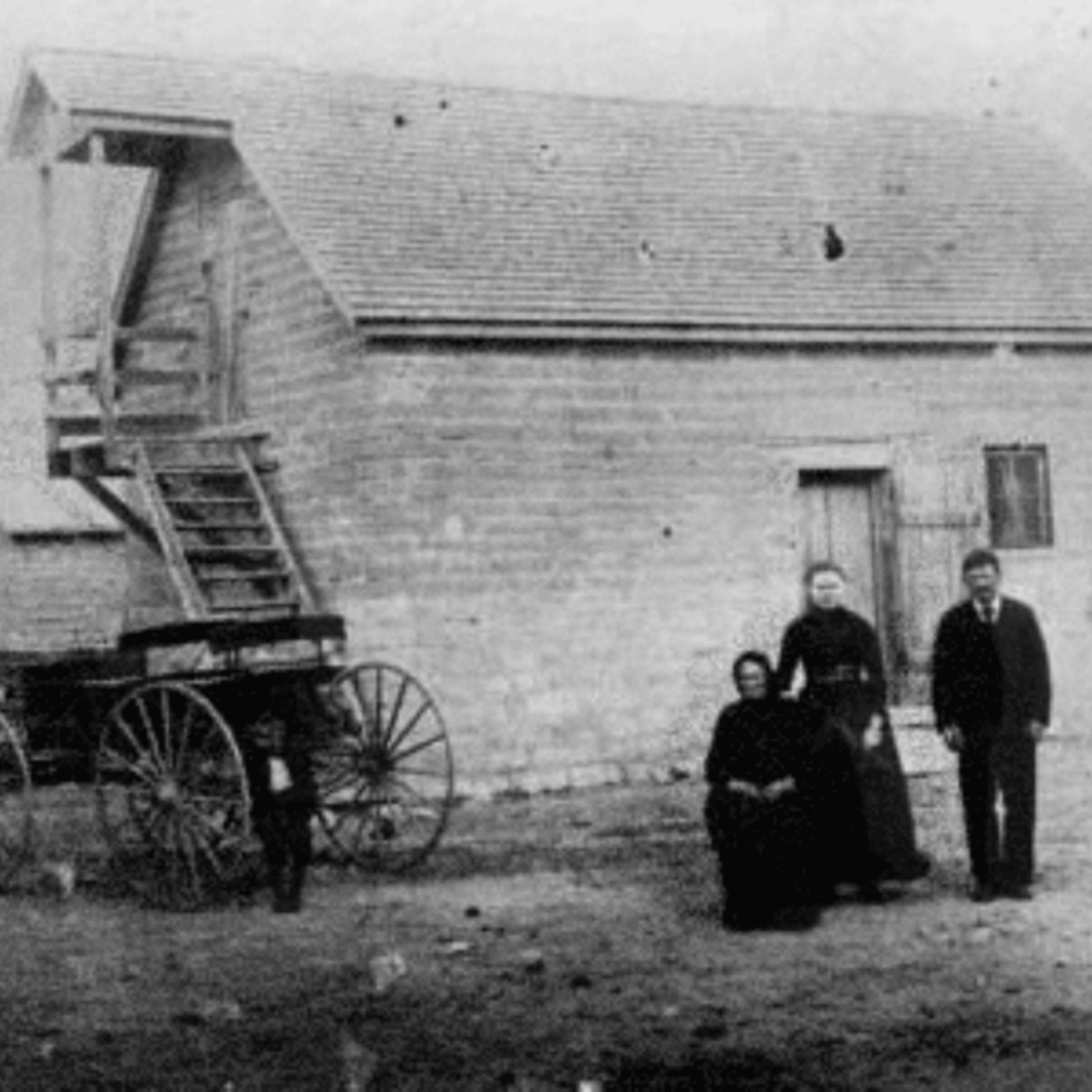New Release: Love Between The Ugly
A conversation with musician James Barney on his new project "Love Between The Ugly"

Experimental musician James Barney's latest solo project, "Love Between The Ugly", has debuted it's first self-titled release: a grim and haunting approach to the darkwave genre that hints at a nation's buried history and enraptures the listener over it's eight track, 35-minute runtime in a deep gloom.
A lifelong musician who is always eager to plunge himself into uncharted avenues while still being any scene's standout contributor, James Barney, an Ohio native raised in Cincinnati and currently residing in Cleveland, has lent his talents to nearly any genre that has crossed his path. His previous solo endeavor, under the moniker N6664, birthed a subgenre of 8-bit/chiptune music known as "bit-doom" (sometimes seen as "chip-doom"). N6664 was notable for Barney's fusion of harsh noise, doom metal, and spoken word that made him a standout of the chiptune scene, arguably becoming its heaviest contributor out of the gate. N6664 made a run of abrasive and cataclysmic live performances over the course of several years and allowed him to always have a foot in industrial/noise territory so as to never be a one-genre name.
His latest project, "Love Between The Ugly", reduces his aggression in favor of building a rich atmosphere and a heartbreaking history lesson in faceless forgotten lives mired in grief. Combining analog drum machines and synthesizer-based production with carefully crafted guitar work while Barney's distorted baritone vocal melodies echo throughout, LBTU immediately plays like a haunted lost recording.
Time itself appears as a central theme to the record's ethos, with tracks like "Mary Adelaide" telling the story of a tragic life set in early 19th century America. The album's closing track "Bleeding Kansas", a direct reference to the infamous series of violent civil outbreaks in the Kansas territory due to the political and ideological split over the legality of slavery between 1854 and 1859, marches the album to its close and leaves the listener pondering the more grim struggles of the nation.
Between these tracks are flashes of a bleak sound that creates a moving meditation on past, present, and future. The more upbeat, but still mournful "Eschatology" provides the listener with a brief swaying dance track, while tracks like "Daguerreotype" and "Harbor" showcase vocal melodies that invoke subtle tinges of Alkaline Trio and The Cure. The interlude instrumental track "Age of Acrimony" highlight Barney's excellent work building and layering a track that moves itself, and the listener, through a structural ambience that captures the album's mystique in its instrumentation alone.
To get to know James and the focus of this project better, and to see where Love Between The Ugly might take listeners in the future, I posed a few questions to James to get a better idea:
Starting with the photo for the cover - It's bleak, historical, void of text and clarity as to the identity of the faces in the foreground. It declares the aesthetic of the record right from the jump. Can you talk about what you know about the photo and how you hope it sets up the narrative?
James: I was going back and forth between what the presentation should be with the artwork, with most projects I've been involved I've never felt partial to text or a font so I knew I would never just be able settle on something that spelled out the name of the project or whatever. I went back and forth in my mind about using a random political cartoon about the Panic of 1819, the first widespread financial crisis the United States really felt, but was never really married to it. One day, I was watching a documentary about immigrant life in America in the 19th Century when this photo flashed across the screen and it evoked so much of what I was currently putting together with the album, checked all of the boxes in a momentary glance with it conveying as much ambiguity as it does comfort. I rewound the video, took a screenshot and did some quick research to find that it was public domain photo of a German emigrant family that found it's way to Kansas in the 1860's.
The production is minimal while able to build and swell throughout. What was the production process like from the demo to the final cut?
James: I build all songs in one direction starting from the drum machine, mostly being an old Yamaha, and then work a riff and structure around the pulse from the drum machine. In the case of this album, it was recorded entirely with a Tascam 4-track tape machine - so I would do each individual track and stack as needed. This process naturally lends to construct and develop itself in a way that supports the tune. My affinity for Dungeon Synth music and groups like Cathedral Tears and Dead Can Dance that all have great urgency with their music that typically has a dynamic working around a constant.
What other media (music, film, text) inspired this album's tone and historical melancholy. What did you want the listener to take away from this release?
James: There's a interesting book called "Age of Acrimony" (That of which I named the same song over) that put me in the space to be interested in the time period and how the people in America of their time is ultimately not too dissimilar to how people feel towards their institutions today. From the time that book starts, which is from the late 1800s onward, I then worked backwards and stopped around the "Era of Good Feelings". I also watched all of the Ken Burns "Civil War" doc while recording. One of the major real-world examples that had a direct influence is the first city-scape Daguerreotype, an early form of photography, of Cincinnati from 1838. You can find it in the main library typically by request in a specific room. I've always found it very moving and I'm still not sure why. Definitely would point to that as a direct inspiration. The only thing I could recommend to take away from this is is the reminder there's so much more going in-between the lines of recorded history, people with much more relatable tales than the people on the page.
Your projects are all well-honed and derived from a specific focus. Is LBTU a narrative/themed project, or do you hope to keep the sound consistent while exploring various tones and narratives?
James: When it comes to personal projects, it's easiest to be in the mindset of a theme but I don't like the box I can also work myself in by doing so - this goes for the sound too. Now that this release is done, I can say the historical theme might be flexible enough to speak about it directly or in the abstract. For example, the intro song "Comma" started off about writing lyrics on a typewriter, just that. It had a line in it I really liked and it went from that to a love song but with such a strong allegory that it could still also be a song about a typewriter in the end. I know whatever is next for LBTU will have the same mindset, and it will have a similar meta-narrative. Sonically, I tried to do the same where all the delivery is different but the sound comes off of that same structure.
Generally speaking, where do you go from here? What is on the horizon in terms of music and art?
James: Aiming to start the next LBTU release soon with a Tascam 8 track in tow. I also am aiming to release a song for Sick Man of North America soon, as well as continue to contribute to a 976EVIL EP.
Love Between The Ugly is streaming on all platforms.

